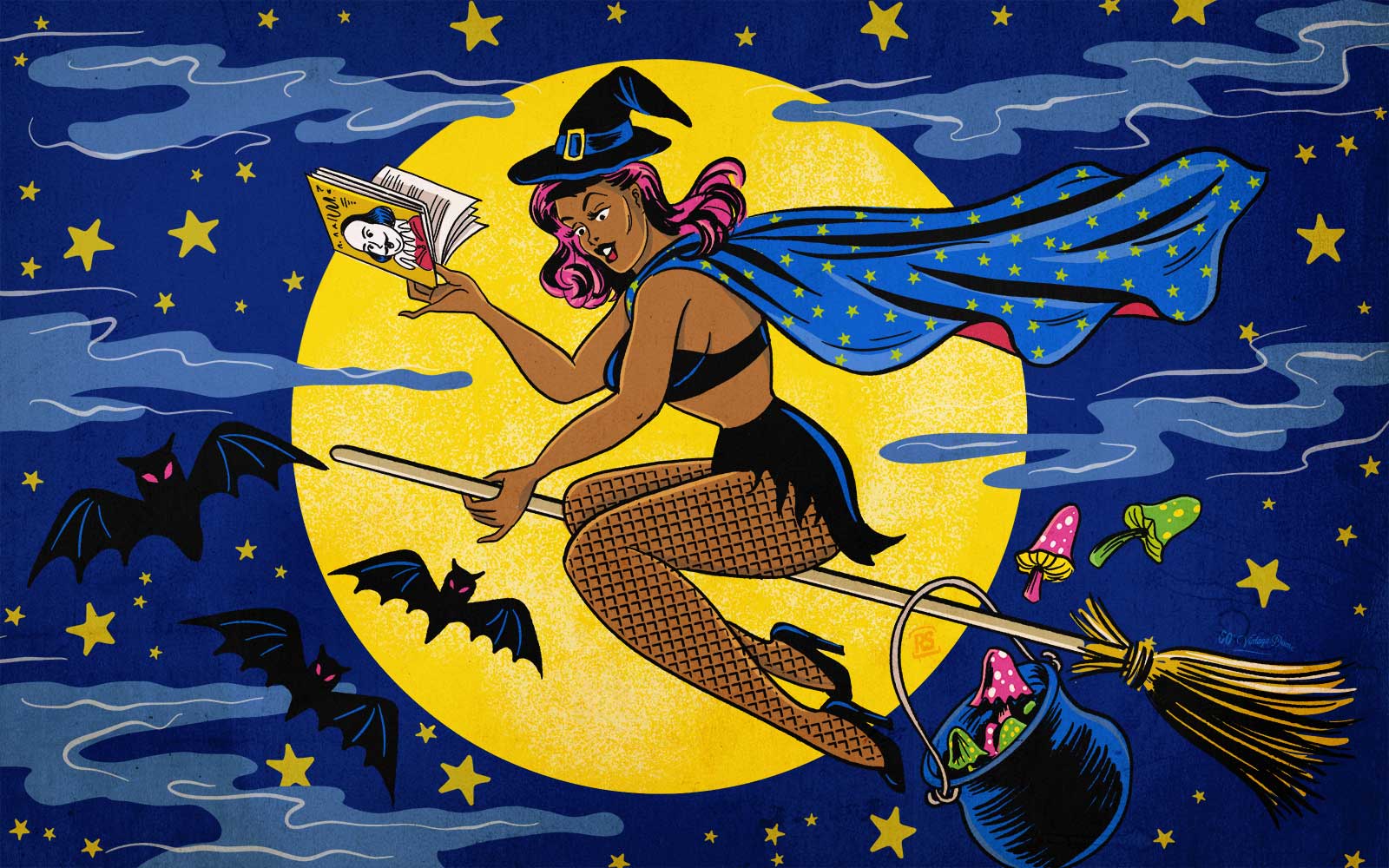It’s an image we’ve all seen a million times: the silhouette of a warty-nosed witch saddled on a broomstick, flying across a full, pale amber moon. There’s something iconic about the flying broomstick, and we’ve seen it recreated in tons of shows and movies like “Bewitched,” Hocus Pocus and even Harry Potter.
So while that image itself isn’t new to us — it’s practically a Halloween staple — if you think about it, it really does turn into quite the head-scratcher. Who thought of this wild idea? Is it rooted in some truth? Would a vacuum cleaner work for modern-day witches like they did for Sabrina?
Thanks to the magic of the internet, we were able to find out, and you might be surprised by how trippy this origin story actually is. But who are we kidding — we were all kind of suspecting that, right?
To find out about this lore’s origin, let’s first take a look at the history of the broom. While the actual invention of the modern broom wasn’t until 1797 (credited to Levi Dickinson in Massachusetts), the act of sweeping has been around since ancient times, and brooms during those times were probably made by bundling together dried twigs, husks or other organic materials.
Since they were used to clean the home (particularly ash from the hearth), brooms became a symbol of domesticity, and thus tied to femininity and womanhood. Yeah, our inner feminists didn’t love that, but that adds a whole new layer to the image of the witch flying on her broomstick — she’s taking off and exploring her freedom on a vehicle that symbolically shackled her to the domestic space. It also represented another reason why witches were so feared in the past; is there anything more terrifying than a woman defying the laws of society (and physics)? If that’s not a middle finger to the patriarchy, then we don’t know what is.
Now let’s get to the flying part. For that, we need to step into the way-back machine and go to Europe’s Middle Ages. During this time, people had discovered the hallucinogenic properties caused by tropane alkaloids in plants like deadly nightshade (Atropa belladonna), henbane (Hyoscyamus niger), mandrake (Mandragora officinarum) and jimsonweed (Datura stramonium). They also found the “dancing mania” inducing ergot, a fungus that likes to be hosted on plants like rye and rye itself, which people used to make bread.
Ingesting ergot in high doses and any of the aforementioned plants could be lethal or come with tons of unpleasant side effects like skin irritation, nausea, vomiting and more. But that didn’t stop these psychedelic pioneers from finding out how to use them.
Eventually, it was found that these hallucinogens could take effect through the skin without garnering these unpleasantries, so items like salves and ointments became the best way to experience the high. People who feared witches believed that these potions were made with horrifying ingredients — in Malleus Maleficarum, author Heinrich Kramerrendered wrote that they were made with the rendered fat of children. In truth, it was probably with vegetable oil or animal fat.
The most receptive areas on the body to these brews were through sweat glands in the armpits or through the mucus membrane of the genitals. So this is where the broom *ahem* fits into the equation. Historical records account that “witches” would prepare the salve on the broom handle, then use that as an applicator. Here are a few examples:
- In 1324, Lady Alice Kyteler (Ireland’s earliest known accused witch) was sentenced to burn at the stake for killing her husband with sorcery. A 16th century English historian, Raphael Holinshed, recounted investigator’s evidence against her: “In rifleing the closet of the ladie, they found a pipe of oyntment, wherewith she greased a staffe, upon which she ambled and galloped through thick and thin.”
- In 1470, theologist Jordanes de Bergamo wrote in his manuscript, Quaestio de Strigis: “But the vulgar believe, and the witches confess, that on certain days or nights they anoint a staff and ride on it to the appointed place or anoint themselves under the arms and in other hairy places.”
So while witches were flying high, it’s doubtful that they were actually soaring through the air. But that didn’t stop people who feared covens and witchcraft from talking about it. There are plenty of old texts and images featuring women riding broomsticks; the earliest we know of dates as far back as 1451 in French poet Martin Le Franc’s manuscript, Le Champion des Dames. And, ironically, the first witch to confess to riding a broom was French priest named Guillaume Edelin in 1453, who was arrested, tried and tortured for witchcraft because he publicly criticized the church’s warnings or witchery.
So there you have it — that’s a quick look at where the flying broomstick lore came from. But before you start eyeballing the broom you have in the corner, we have to say we don’t recommend trying out this article’s mentioned witch’s brew. Rather, here are some non-toxic Flying Ointments you can get on Etsy, or some psychedelic potions you can try instead!
Sources:
Murder, Magic, and Medicine – J. Mann. Oxford University Press, 2000.
The Secrets (and Sex Toys?!) Behind How Witches “Flew” – Jessica Mason. The Mary Sue, 2020.
Why Do Witches Ride Brooms? The History Behind the Legend – Sarah Pruitt. History, 2020.
Why Do Witches Ride Broomsticks? Hallucinogens – David Kroll. Forbes, 2007.
Why Do Witches Ride Brooms? (NSFW) – Megan Garber, The Atlantic, 2013.













